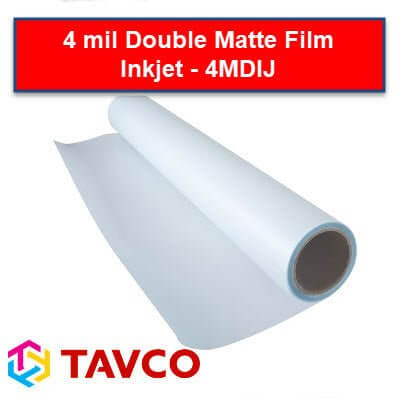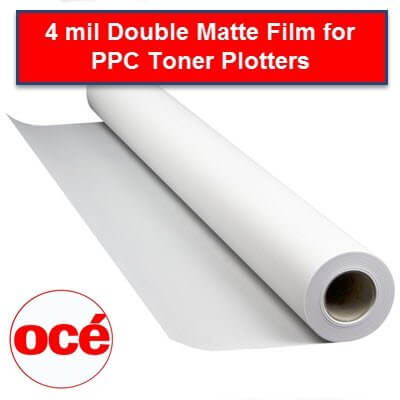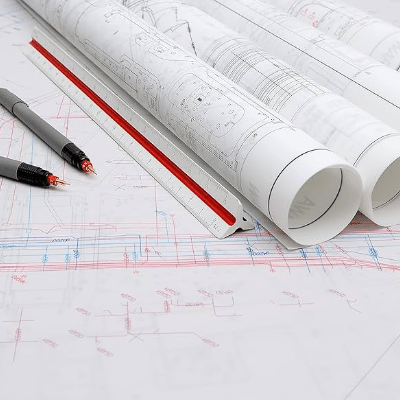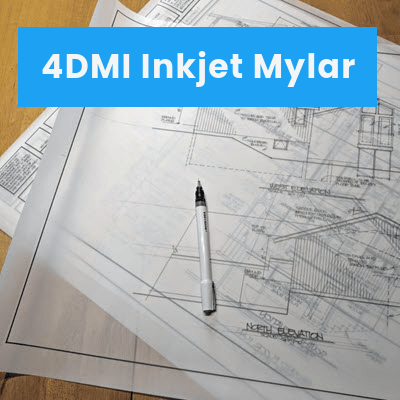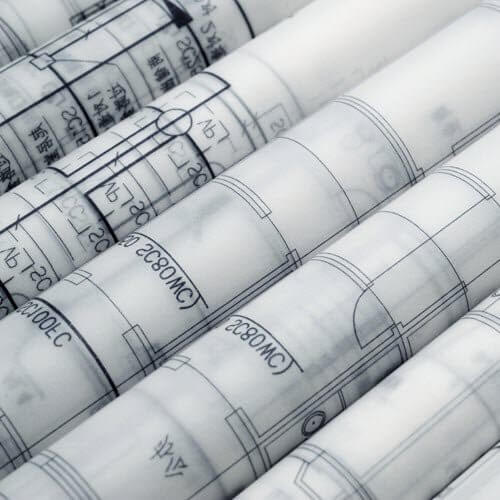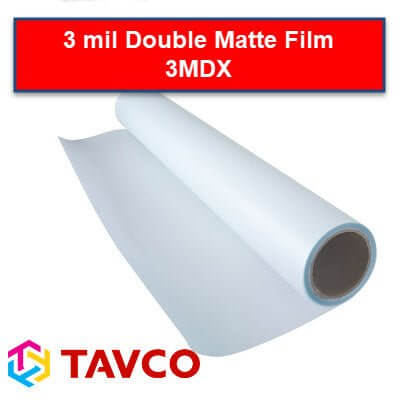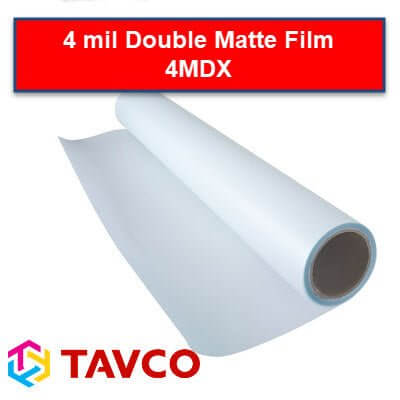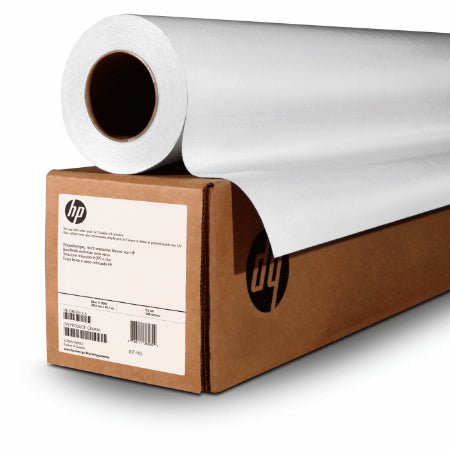Professional-grade mylar film delivers superior dimensional stability and durability for technical drawings, engineering schematics, and archival document reproduction on Canon imagePROGRAF and HP DesignJet wide-format printers.
Our mylar film collection features polyester-based drafting media designed for precision CAD applications that require waterproof, tear-resistant prints that maintain exact measurements over time. Available in 24", 36", and 44" roll widths with matte and glossy finishes, these films serve architecture firms, engineering departments, construction teams, and government agencies across Texas requiring permanent technical document solutions.
Why choose mylar film for technical printing:
- Dimensional stability — Polyester base resists expansion/contraction from humidity and temperature changes, maintaining drawing accuracy
- Archival permanence — 100+ year lifespan when appropriately stored, ideal for as-built drawings and record documents
- Water and chemical resistance — Prints survive exposure to moisture, oils, and common solvents on construction sites
- Superior strength — Tear-resistant polyester withstands frequent handling and field use without degrading
Mylar Film Comparison Guide
| Film Type | Thickness | Surface Finish | Key Features | Best For |
|---|---|---|---|---|
| Matte Mylar Film | 3 mil (.003") | Matte (both sides) | Accepts pen/pencil markup, low glare | Working drawings, field revisions |
| Glossy Mylar Film | 4 mil (.004") | High-gloss (one side) | Maximum ink density, vivid output | Display graphics, presentations |
| Double Matte Polyester | 4 mil (.004") | Matte (both sides) | Heavy-duty, annotation-friendly | As-built drawings, record sets |
| Clear Polyester Film | 3-5 mil | Clear/transparent | Overlay capability, backlighting | Overlay drafting, light tables |
| Inkjet Coated Mylar | 4 mil (.004") | Inkjet receptive coating | Fast ink absorption, no bleeding | High-detail CAD, fine line work |
| Waterproof Drafting Film | 3 mil (.003") | Matte (both sides) | Extreme weather resistance | Outdoor construction sites |
*Film thickness measured in mils (1 mil = 0.001 inch). Archival ratings based on proper storage conditions per ISO 18902 standards.
Quick Selection Guide
- Best for architecture firms: Double Matte Polyester 4 mil (accepts markup, archival quality, handles frequent use)
- Best for engineering departments: Inkjet Coated Mylar 4 mil (sharp line reproduction, fast drying, dimensional accuracy)
- Best for construction sites: Waterproof Drafting Film 3 mil (weather-resistant, durable, field-ready)
- Best for presentations: Glossy Mylar Film 4 mil (vibrant colors, professional appearance, display-quality)
- Best for overlay drafting: Clear Polyester Film (transparency for layering, light table compatible)
Mylar Film Frequently Asked Questions
Quick Answer: Mylar film is a polyester-based drafting medium that's waterproof, dimensionally stable, and archival (lasting over 100 years), while vellum is a translucent paper that's affected by moisture and humidity.
What's the difference between mylar film and vellum for technical drawings?
Mylar film is a polyester-based synthetic material that offers superior dimensional stability and durability compared to traditional vellum drafting paper. While vellum expands and contracts with changes in humidity (potentially altering drawing dimensions by 0.5-2%), mylar maintains precise measurements regardless of environmental conditions. Mylar is entirely waterproof and tear-resistant, making it ideal for use on construction sites, whereas vellum degrades when exposed to moisture. For archival applications, mylar lasts 100+ years without yellowing or becoming brittle, while vellum typically deteriorates within 25-50 years. Engineering and architecture firms use mylar for as-built drawings, record sets, and any documents requiring long-term dimensional accuracy.
Quick Answer: Yes, Mylar film is compatible with both Canon imagePROGRAF and HP DesignJet plotters that use pigment or dye-based inks; select "film" or "transparency" as the media type in the printer settings.
Can I print mylar film on my HP DesignJet or Canon plotter?
Yes, mylar film is compatible with Canon imagePROGRAF and HP DesignJet wide-format printers equipped with either pigment or dye-based ink systems. For optimal results, load mylar with the coated (receptive) side facing up, and select "film," "transparency," or "coated paper" as the media type in your printer driver settings. Most plotters handle 3-5 mil mylar thicknesses without feeding issues. HP DesignJet T-series, Z-series, and Canon TM/TX series all support mylar printing. Use slower print speeds (quality mode rather than fast mode) to allow proper ink absorption and prevent smudging. For matte mylar, pigment inks deliver the best line sharpness and water resistance. Always run a test print to verify ink adhesion before printing full drawings.
Quick Answer: 3 mil mylar (0.003" thick) works for most applications; use 4 mil for heavy-duty projects requiring frequent handling or extreme durability.
What thickness mylar film do I need for architectural drawings?
For standard architectural and engineering drawings, 3 mil (0.003 inch) mylar film provides sufficient strength and durability while remaining cost-effective. This thickness is suitable for typical office and field use, accepts pen annotations, and feeds reliably through most plotters. Upgrade to 4 mil (0.004 inch) mylar for projects requiring heavy-duty performance: construction documents that will see daily field use, master drawings stored and retrieved frequently, or record sets expected to last decades. The 4 mil option offers approximately 33% greater tear resistance and better withstands repeated folding. For overlay drafting or light table applications, 3 mil clear polyester provides adequate transparency while maintaining structural integrity. Avoid films thinner than 3 mil for technical applications as they may jam in plotter feed systems or tear during handling.
Quick Answer: Mylar film maintains dimensional accuracy within ±0.01% across temperature ranges of 0-120°F and humidity from 20-80% relative humidity.
How dimensionally stable is mylar film compared to paper?
Mylar (polyester) film offers exceptional dimensional stability with expansion/contraction rates of only ±0.01% across typical environmental conditions (0-120°F, 20-80% relative humidity). In comparison, standard bond paper can expand or shrink by 0.5-2% with humidity changes, potentially causing measurement errors of 1/4" or more on a 36" drawing. This stability makes mylar the preferred medium for precision applications where dimensional accuracy is critical: survey maps, engineering schematics, construction as-builts, and government record drawings. The polyester base is chemically inert and unaffected by atmospheric moisture, unlike cellulose-based papers that absorb and release water vapor. For projects requiring precise scaling or long-term dimensional integrity, mylar eliminates the accuracy concerns inherent in paper-based media.
Quick Answer: Yes, matte mylar accepts pencil, pen, and permanent marker annotations; glossy mylar requires special pens designed for non-porous surfaces.
Can I mark up mylar film drawings with pencil or pen?
Matte mylar (both single and double-matte surfaces) readily accepts pencil, technical pens, and permanent markers for field markups and drawing revisions. The matte coating provides sufficient tooth for graphite and ink adhesion, making it ideal for working drawings that require frequent annotations. Use medium to hard pencils (H, 2H) for clean erasable lines, or pigment-based technical pens (Pigma Micron, Staedtler Pigment Liner) for permanent markup. Glossy mylar requires specialized pens designed for non-porous surfaces, such as Sharpie oil-based paint markers or overhead transparency markers. Standard ballpoint pens and water-based markers will not adhere properly to glossy surfaces. For construction markups and redline corrections, double-matte mylar offers the best annotation experience with standard drafting tools.
Quick Answer: When stored flat or rolled adequately in archival conditions (65-70°F, 30-50% RH), mylar film maintains print quality for 100+ years per ISO 18902 standards.
How long do mylar film prints last for archival storage?
Mylar polyester film, combined with pigment-based inks, provides archival permanence exceeding 100 years when stored according to ISO 18902 archival standards (65-70°F, 30-50% relative humidity, and away from direct light). The polyester base is chemically stable and does not yellow, become brittle, or degrade like paper-based media. Pigment inks from Canon PFI or HP 727/730 series offer superior fade resistance compared to dye-based inks, maintaining line definition and color accuracy for decades. Store mylar prints flat in acid-free folders or roll with the printed side facing outward (never crease or fold sharply). This combination makes Mylar ideal for government records, as-built construction documents, historical architectural plans, and any technical drawings requiring permanent retention. Many municipalities specify mylar for official record drawings precisely because of its proven archival performance.
Quick Answer: Store mylar rolls at 65-75°F and 30-50% humidity, rolled with printed side out, protected from UV light; flat storage in acid-free folders is ideal for long-term archival.
How should I store mylar film prints for maximum lifespan?
Store mylar film prints in controlled environments at 65-75°F with 30-50% relative humidity to maximize archival lifespan. For rolled storage, keep Mylar prints rolled with the printed side facing outward (reverse rolling) using a 3-to 4-inch diameter core to prevent ink transfer and cracking. Never fold or crease mylar as the polyester base retains permanent fold lines. Flat storage in acid-free archival folders or plan file drawers provides optimal protection for frequently accessed drawings. Protect mylar from prolonged UV light exposure, which can fade pigment inks over time despite the film's stability. Label rolls or folders with archival-safe markers and store vertically in plan racks or horizontally in flat files. For construction firms and engineering departments, designate climate-controlled plan rooms for storing Mylar record drawings. When transporting mylar prints to job sites, use protective tubes and avoid extreme temperature swings in vehicle storage.
Texas Mylar Film Experts: TAVCO provides mylar film and polyester drafting media for Canon imagePROGRAF and HP DesignJet plotters across Houston, Dallas-Fort Worth, Austin, and San Antonio. Our technical specialists assist architecture firms, engineering departments, construction companies, and government agencies in selecting the optimal film thickness and coating for specific applications. Call 866-254-8590 for mylar film quotes, bulk pricing, or expert guidance on transitioning from paper to film-based workflows. Since 1984, Texas professionals have trusted TAVCO for archival-quality media and reliable technical support.

